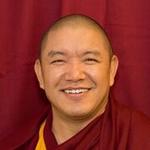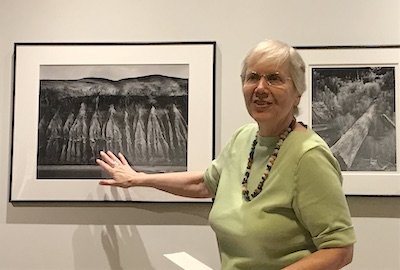「見る」事と「感じる」事は、似て非なるもの…、いやむしろ、全くの別物だと言ってよい。
とはいえ撮影においては、極々一般的に考えても、おそらく「見る」事が最優先されてしまう。
しかし、時に「見る」という行為は、物事の本質を見誤らせる事があるから注意が必要だ。
見た目の瞬間的な印象により、形状、色、その他幾つもの要因に惑わされ、本質から遠ざかってしまう事が往々にして生じるからだ。
故に真の写真家は、見た目の印象に惑わされる事なく、「感じる」ことを優先する。
被写体や場が発する「気」を受け止め、いつ、どこから、どのように捉える事が最上となるのかを考える。
その上で、改めて被写体をちゃんと「見る」。
あらゆる角度から見る事で、そのものの本質が一番表出している場所を探し出す。
自分が感じたものは何なのか、自分が響いたものは何なのか、自分が表現したいものは何処なのか。
それらを見極めた上で、初めてカメラを構える。
闇雲にシャッターを押すよりも、まずは被写体とじっくり対峙して、通じ合う事が重要なのだ。
これらの行為を日本では、「心眼を開く」あるいは「心眼で見る」という。
被写体の本質を見抜き、心で語り合う事を指す。
そうする事で、瞬間的には見えなかったものまでもが見えてくる。
付け加えるならば、心の目で物事を捉えられるという事は、それはある種の覚醒と同意である。
この本に収録された写真の多くは、そうした心の目で見出された被写体である。
これは筆者の覚醒の記録である。
– 小林伸幸
Seeing and feeling are not the same thing… rather, they are completely different things. In shooting photography, even in the most general sense, “seeing” is probably the most important priority. However, we need to be careful because sometimes the act of “seeing” can lead us to misunderstand the true nature of things. This is because we are often misled by shape, color and other factors due to our instantaneous impressions of the subject…This can lead us from the subject’s essence. Therefore, a true photographer prioritizes “feeling” without being misled by the impression of appearance. I think about ‘when’ and ‘from where’ to best capture the “spirit” of the subject or place….and then I “look” at the subject again. By looking at it from all angles, I find the place where the essence is most apparent. What did I feel? What resonated with me? And where did I want to express myself? It is only after determining these things that I set up my camera. Rather than just pressing the shutter button in the dark, it is important to face your subject carefully and communicate with it.
These actions are called “opening the mind’s eye” or “seeing with the mind’s eye” in Japan. It means to see through the essence of the subject and talk to it from the heart. By doing so, even things that were not visible in the moment become visible. Many of Eru Narayana’s photographs are of subjects found through the mind’s eye. This is a record of his awakening.

for further information please visit: https://zenne-inc.com/en.html
“I’m trying to find words to express to you what enters into my imagination as I view your photographic art; no words would give justice from my limited vocabulary to describe what I feel and where I travel to within my indigenous mind, body and spirit. I’m not sure if a response is needed when a sigh will suffice and the first step is made in total consciousness as I walk out onto the earth, the land, the mother. The nature in your vibrant images drove me in to the point of emotional and breathtaking states. You are definitely being inspired and gifted by Mother Earth to be her representative. I had to stop watching at some point due to their intensity. Thank you for trusting me to view mother earth’s children in their perfection.”

-Joseph A. Naytowhow, Sturgeon Lake First Nation
Joseph Naytowhow is a gifted Plains/Woodland Cree (nehiyaw) singer/songwriter, storyteller, and voice, stage and film actor from the Sturgeon Lake First Nation Band in Saskatchewan. As a child, Joseph was influenced by his grandfather’s traditional and ceremonial chants as well as the sounds of the fiddle and guitar. Today he is renowned for his unique style of Cree/English storytelling, combined with original contemporary music and traditional First Nations drum and rattle songs.
“Nobody can wash away our perception with water,
Nobody can dispel our suffering with their hands,
The wisdom can not simply be transferred;
You can be liberate by revealing the true nature of things. So please awake.”

-Geshe Gelek Chodak
Geshe Gelek Chodhak was born in Sikkim, the oldest of five children. At the age of seven, Geshe-la went south to live at Sera Jey monastery and become a monk. He achieved the degree of Geshe Lharampa in 1997, continuing on to the Gyume Tantric College to learn the intricacies of tantric rituals. At the suggestion of his classmate, Yangsi Rinpoche, Geshe-la was requested by Lama Zopa Rinpoche to come to Kadampa Center and be our resident teacher. Since his arrival in 1999, we have been privileged to have Geshe-la as our spiritual friend while he teaches us the Buddha Dharma with sincerity, humor, and patience.
for further information, please visit: https://kadampa-center.org/geshe-gelek
“I was very fortunate to grow up with parents who loved nature. With the opportunities they gave me, I discovered that rivers and mountains, snowflakes and stones, were as alive and vibrant with spirit as trees, flowers, animals, and people. I learned that when I quieted my mind and opened my heart, I could hear the forest breathe, dance to the music of a starry night, feel the thrumming energy of the earth. I could be part of, one with, love, and be grateful.
Words and images can be powerful symbols, invitations that lure us toward greater awareness and deeper connections. Eä is such a word, calling us to awaken with wonder as our ally. As my father used to say, “Mysteries lie all around us, even in the most familiar things, waiting only to be perceived.” The images in this book are a testament to one person’s journey toward wakefulness in the midst of the woodlands and meadows of Manitoba. For me, the images serve as an inspiration to heed the call of your book in my own journey wherever it may lead.”

-Barbara Bullock-Wilson
Barbara Bullock-Wilson, Managing Member
Bullock Family Photography LLC
for further information about Ms. Bullock-Wilson, please visit: www.wynnbullockphotography.com
“Awake”
To be awake is to know that you exist. (We disappear to ourselves when we drift into dreamless sleep). But isn’t it true that all of the contents of your awareness amount to the absolute totality of your existence? Every sight, every sensation, every thought, mood and every intuitive impression you are aware of is all that there is of you as a living being… as far as you are aware of. What you see is one component of who you actually are, so it matters how you appreciate the visual world around you.
It has been said that all that a photograph can do is peel away and render the very surface of the world. But there is so much more to you than what appears on surfaces. If your appreciation of nature for example, is only what things appear to be, this would be just as if you were being judged to be only what others see of you at a glance.
But how might it be possible to photograph beyond the surfaces of things?
Well, all artists ever do is attempt to render and share things that they meaningfully experience. So, this means that before you have any chance at all of photographing more than surfaces, you must attempt to experience deeper elements of the realities within your awareness. This is the mindful and probing work that you have done. Vibrant and mysterious beauty is what results.”

-Chris Johnson, author “The Practical Zone System for Film and Digital Photography”
The Practical Zone System for Film and Digital Photography: Classic Tool, Universal Applications
Awake
Awaiting the possibilities
Expecting the possibilities
Welcoming the potentialities
Sensing creative energy
Ready to move
Ready to appreciate
Ready to learn
-Dr. Ruth Elinor Kastner, author:
-The Transactional Interpretation of Quantum Theory: The Reality of Possibility (CUP, 2012);
-Understanding Our Unseen Reality: Solving Quantum Riddles (Imperial College Press, 2015)
-Adventures in Quantumland: Exploring Our Unseen Reality (World Scientific, 2019)
Ruth E. Kastner is a philosopher of science, educator, and author. She received her M.S. in physics from the University of Maryland, College Park in 1992, and then decided she was interested in the foundational aspects being studied at the UMCP Philosophy Department. She received her Ph.D. in Philosophy (History and Philosophy of Science) with J. Bub as her dissertation advisor. She has received two National Science Foundation awards for research into interpretational issues in quantum theory, and is the author of three nonfiction books based on her research:
for further information, please visit: https://www.ruthekastner.org
Awake
“To me the concept of “being awake” represents the ability to recognize and capture reality not only with the human race’s six senses and the concepts of sciences but much more by our soul, our spirit and by our subconscious mind. This at times leads to a holistic comprehension of reality which is beyond the obvious, is intellectually non-descriptive hence utterly intuitive.”

-Mr. Hans Keist
CEO, Alpa of Switzerland
alpa.swiss

